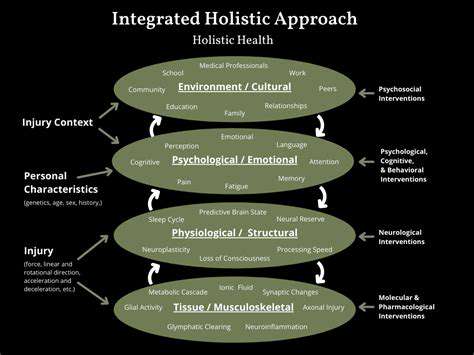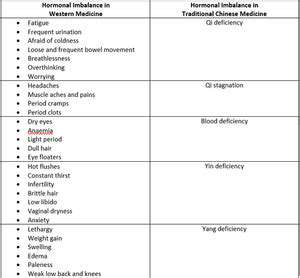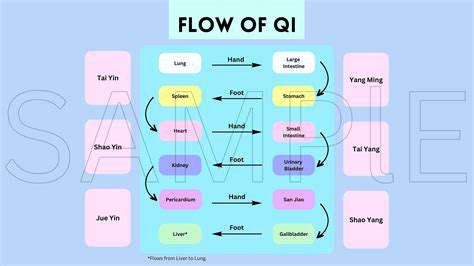TCM for Headaches & Migraines: Natural Relief
Exploring the Root Causes of Headaches and Migraines in TCM
Understanding the TCM Perspective on Headaches
Traditional Chinese Medicine (TCM) views headaches and migraines not as isolated ailments but as manifestations of imbalances within the body's vital energy, or Qi. This perspective differs significantly from Western medicine, which often focuses on identifying and treating specific triggers or physical structures. In TCM, the underlying cause could involve stagnation of Qi, deficiency of Yin or Yang, or an imbalance in the five elements (wood, fire, earth, metal, and water). Understanding these fundamental concepts is crucial for effectively addressing the root cause of headaches from a TCM standpoint.
The key concept in TCM is that headaches aren't just a symptom, but a signal that something within the body's energy system needs attention. This holistic approach considers the individual's overall health, lifestyle, and emotional state, recognizing that stress, poor diet, and insufficient rest can all contribute to these imbalances, manifesting as headaches.
Identifying the Key Energy Meridians Involved
TCM identifies specific meridians, pathways of energy flow, that are often implicated in headache and migraine patterns. The Liver meridian, often associated with stagnation and stress, is a common culprit. Disruptions in the Liver's Qi can lead to tension headaches. Additionally, the Gallbladder meridian, connected to anger and frustration, can also manifest as headaches, especially in the temporal region.
The Stomach and Spleen, responsible for digestion and transformation, can also play a role. Imbalances in these organs can lead to headaches related to food sensitivities, digestive issues, or emotional turmoil. Understanding the specific meridians affected can help in targeted treatment strategies within the TCM framework.
The Role of Dietary Imbalances in Headaches
TCM emphasizes the importance of a balanced diet in maintaining overall health and preventing headaches. Certain foods are considered to be heating or cooling, and an imbalance in these qualities can disrupt the body's energy flow. Foods that are overly spicy, oily, or processed can contribute to inflammation and heat within the body, potentially triggering headaches. Conversely, an excessive intake of cold foods can lead to a deficiency of Yang energy, also contributing to headaches.
A tailored TCM diet, focusing on fresh, whole foods, can help restore balance and alleviate headache frequency. This includes incorporating foods that nourish the specific meridians implicated in the individual's headaches, and avoiding those that exacerbate imbalances.
The Impact of Emotional and Mental Factors on Headaches
Emotional factors, like stress, anxiety, and depression, can significantly impact the body's Qi and contribute to headaches. TCM recognizes the close connection between mind and body, emphasizing that emotional imbalances can manifest physically. Stress, for example, can lead to a stagnation of Qi in the Liver, resulting in tension headaches.
TCM therapies often incorporate techniques to address emotional imbalances, such as acupuncture, acupressure, and herbal remedies. These approaches aim to restore emotional harmony and balance the body's energy, thereby reducing the frequency and intensity of headaches.
Treatment Approaches in TCM for Headaches
TCM offers a variety of treatments for headaches and migraines, including acupuncture, herbal medicine, and dietary adjustments. Acupuncture stimulates specific points on the body to restore the flow of Qi and alleviate pain. Herbal remedies, meticulously formulated based on individual constitutions and imbalances, can help nourish the body, regulate energy flow, and reduce inflammation.
Dietary modifications, tailored to address the specific imbalances identified through diagnosis, play a crucial role in TCM headache management. These approaches, when combined, offer a comprehensive and holistic strategy to address the root causes of headaches and migraines from a TCM perspective.
Identifying the Specific TCM Patterns

Identifying the Underlying Pattern
Identifying the underlying pattern in Traditional Chinese Medicine (TCM) is a crucial first step in developing an effective treatment plan. This process involves careful observation and analysis of the patient's symptoms, medical history, and overall well-being. A thorough understanding of the specific pattern allows practitioners to tailor interventions that address the root cause of the imbalance, rather than simply treating the symptoms. This approach emphasizes the interconnectedness of mind, body, and spirit, recognizing that imbalances in one area can manifest in other areas.
Careful consideration of the patient's constitution and lifestyle factors, such as diet, sleep, and stress levels, are also integral parts of this process. By understanding the individual's unique predisposition to certain imbalances, practitioners can develop a personalized approach that promotes long-term health and well-being. This includes considering the patient's emotional state, their environment, and any potential external stressors.
Assessing the Five Elements
The Five Elements theory is a fundamental concept in TCM that describes the interconnectedness of five energetic forces—Wood, Fire, Earth, Metal, and Water. Each element is associated with specific organs, emotions, and characteristics. Recognizing the imbalances within these elements is critical to understanding the underlying pattern.
Assessing the state of each element in the patient provides valuable insights into the source of the disharmony. This allows for a more precise diagnosis and treatment plan.
Examining the Symptoms
A detailed evaluation of the patient's symptoms is essential. This includes not only physical symptoms, but also emotional and mental aspects, such as mood swings, anxiety, or feelings of restlessness. Symptoms are not just isolated occurrences but often reflect a deeper imbalance within the body's energetic system. Careful consideration of the nature, intensity, and duration of these symptoms is vital to understanding the underlying pattern.
The location and timing of symptoms also provide important clues. For example, pain in a specific area may correlate with a particular organ or energetic channel. Understanding these patterns helps to pinpoint the root cause of the disharmony.
Analyzing the Pulse and Tongue
The pulse diagnosis and tongue examination are valuable diagnostic tools in TCM. The pulse provides insights into the flow of Qi, blood, and other vital energies within the body. Observing the pulse's rhythm, strength, and depth reveals subtle patterns of imbalance. This method provides a non-invasive way to gain a deeper understanding of the patient's energetic state.
The tongue's color, shape, and coating offer additional clues about the state of the body's internal environment. A detailed examination of the tongue and pulse are integral to the process of identifying the underlying pattern in TCM.
Considering the Patient's History
Gathering a comprehensive medical history is crucial for understanding the patient's overall health status. This includes inquiring about past illnesses, injuries, surgeries, and any previous treatments. This information helps to pinpoint potential contributing factors to the current imbalance.
The patient's lifestyle, including diet, sleep patterns, stress levels, and exercise habits, can also provide valuable information about the underlying causes of the imbalance. Understanding these factors can help in developing a personalized treatment plan.
Differential Diagnosis and Verification
Differential diagnosis is crucial to rule out other potential causes for the patient's symptoms, ensuring that the TCM pattern is the most accurate representation of the underlying imbalance. This process involves considering various diagnostic possibilities and eliminating those that do not align with the TCM pattern.
Verification of the identified pattern is essential to ensure that the diagnosis is accurate. This often involves further investigation and analysis of the patient's symptoms and other diagnostic tools to confirm the identified pattern. This process is crucial for ensuring that the treatment plan is effective and addresses the root cause of the imbalance.
TCM Treatment Strategies for Headache and Migraine Relief
Acupuncture and Moxibustion
Acupuncture, a cornerstone of TCM, involves inserting thin needles into specific points on the body to stimulate energy flow and alleviate pain. These points, believed to be interconnected pathways called meridians, are strategically located throughout the body, and their stimulation is thought to harmonize the body's vital energy, or qi. By targeting these points, acupuncture can help reduce inflammation, relax muscles, and improve blood circulation, all of which contribute to headache and migraine relief. This approach can be particularly effective for addressing the root causes of headaches, rather than just treating the symptoms.
Moxibustion, another TCM technique, involves burning dried mugwort herb near specific acupuncture points. The heat generated from the burning herb is believed to stimulate the flow of qi and promote blood circulation. This can further relax muscles, reduce inflammation, and ease tension headaches and migraines. This method is often used in conjunction with acupuncture, enhancing the overall therapeutic effect. The gentle heat and focused stimulation contribute to a deeper relaxation and pain relief, making it a valuable part of a comprehensive TCM treatment plan.
Herbal Remedies and Dietary Considerations
Traditional Chinese medicine emphasizes the importance of a balanced diet and herbal remedies in managing headaches and migraines. Specific herbs, carefully selected and prepared, can help to address the underlying imbalances contributing to these conditions. For example, certain herbs may be used to reduce inflammation, improve blood circulation, or calm the nervous system. This holistic approach to headache management addresses the root causes of the pain, rather than just masking the symptoms.
Dietary recommendations play a crucial role in TCM treatment strategies. Certain foods are believed to exacerbate headache symptoms, while others can promote well-being. The TCM approach emphasizes avoiding foods that are overly stimulating or that may contribute to inflammation, such as processed foods, caffeine, and alcohol. Instead, focus on consuming whole foods, including fruits, vegetables, and lean proteins, to support the body's natural healing processes. These dietary adjustments, combined with herbal remedies, can significantly contribute to long-term headache and migraine management.
Careful consideration of the individual's constitution and the specific type of headache is essential when choosing herbal remedies and dietary modifications. A qualified TCM practitioner can provide personalized guidance on these aspects, ensuring the treatment plan aligns with the individual's needs and health status. This personalized approach is a key component of effective TCM treatment.
Understanding the different types of headaches, such as tension headaches or migraines, and their potential causes is vital. This knowledge helps to tailor treatment strategies for optimal results. TCM practitioners consider the root causes of the headaches, such as stress, emotional imbalances, or dietary factors, to develop a personalized treatment plan.











